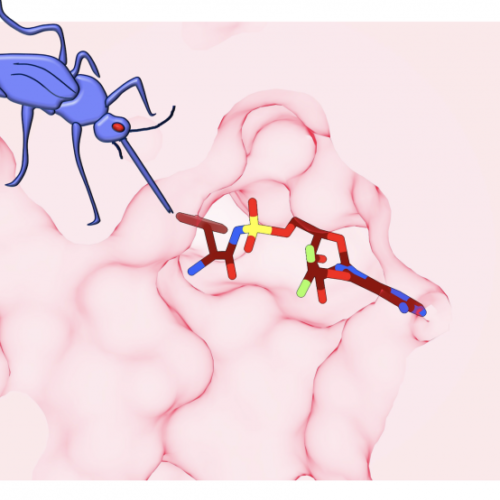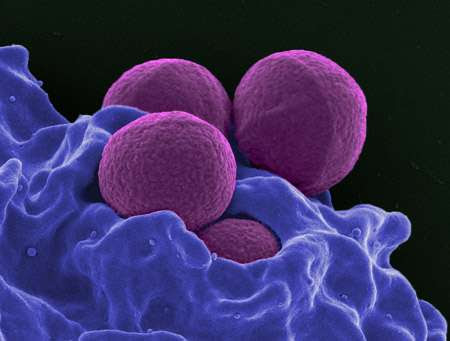A new class of motorized molecules that kill specific bacteria shows promise to curb the threat of antibiotic resistance to human health. Rice University scientists led a team developing light-activated hemithioindigo (HTI) molecules that destroy Gram-positive bacteria and the biofilms they form. The molecules enhance the local generation of reactive oxygen species (ROS) that chemically attack and destroy drug-resistant cells. The new molecules...
Tag: <span>New weapon</span>
This parasite will self-destruct: researchers discover new weapon against drug-resistant malaria
Diagrammatic representation of the target of the antimalarial compound ML901 (coloured structure), showing highly specific and potent inhibition of the malaria parasite. ML901 finds a particular chink in an enzyme called tyrosine tRNA synthetase (depicted in pink), part of the machinery that the malaria parasite uses to generate the proteins needed to reproduce itself. The...
A glimmer of hope: New weapon in the fight against liver diseases
by Niigata University Increased levels of annexin A1, lactotransferrin, and aminopeptidase N. Increase the counts of anti-inflammatory macrophages with high motility and phagocytic ability, which increase repair of damaged tissue. Induces regulatory T cells and fibrolysis. b) The γ-sEVs also have the ability to reduce inflammation as well as downregulate fibrogenesis. Credit: Niigata University Researchers from...
New weapon against resistant bacteria
by Birgitte Svennevig, University of Southern Denmark A colorized scanning electron micrograph of MRSA. Credit: National Institute of Allergy and Infectious Diseases Every day, people die from simple infections even though they have been treated with antibiotics. This is because more and more bacteria have become resistant to the types of antibiotics that doctors can prescribe....
New weapon for inflammation
FLINDERS UNIVERSITY Flinders University researchers have discovered a new anti-inflammatory role for well-known blood clot protein fibrinogen, which could support targeted new treatments for kidney, heart and other common diseases. The study in Redox Biology describes how fibrinogen can be protective against hypochlorite – a chemical generated by the body during inflammation – and so act as a kind...



